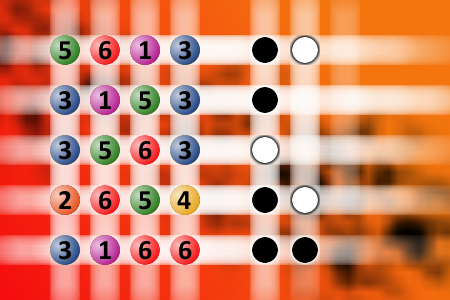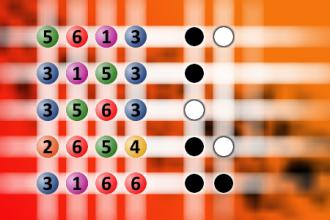Which is a winning combination of digits?
The computer chose a secret code (sequence of 4 digits from 1 to 6). Your goal is to find that code. Black circles indicate the number of hits on the right spot. White circles indicate the number of hits on the wrong spot.Correct answers: 25
The first user who solved this task is Djordje Timotijevic.
#brainteasers #mastermind

A little girl is sitting on he...
A little girl is sitting on her grandpa's lap and studying the wrinkles on his old face. She gets up the nerve to rub her fingers over the wrinkles. Then she touches her own face and looks more puzzled. Finally the little girl asks, "Grandpa, did God make you?"
"He sure did honey, a long time ago," replies her grandpa.
"Well, did God make me?" asks the little girl.
"Yes, He did, and that wasn't too long ago," answers her grandpa.
"Boy," says the little girl, "He's sure doing a lot better job these days isn't He?"
"He sure did honey, a long time ago," replies her grandpa.
"Well, did God make me?" asks the little girl.
"Yes, He did, and that wasn't too long ago," answers her grandpa.
"Boy," says the little girl, "He's sure doing a lot better job these days isn't He?"

